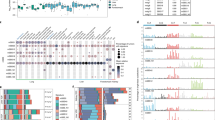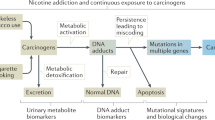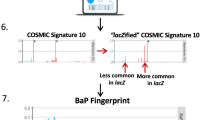Abstract
A small (approximately 30) but varied group of organic and inorganic compounds appear to be carcinogenic in both humans and experimental animals. A much larger number and wider variety of chemical carcinogens, primarily synthetic organic compounds, are known for experimental animals. These agents include a small (approximately 30) and varied group of metabolites of green plants and fungi. Many more of these carcinogens must exist in the living world. As with the synthetic carcinogens, the majority of these naturally occurring carcinogens are procarcinogens that require metabolic conversion into reactive electrophilic and mutagenic ultimate carcinogens. These strong electrophiles combine covalently and non-enzymatically with nucleophilic sites in DNAs, RNAs, proteins, and small molecules in target tissues. One or more of the DNA adducts appear to initiate carcinogenesis in an irreversible manner. The subsequent promotion step leading to gross tumours may be completed by further administration of carcinogen or by treatment with non-carcinogenic promoters. Roles for the RNA and protein adducts in the carcinogenic process have not been excluded. Recent data on the metabolic activation and reactivity in vivo of the naturally occurring carcinogens ethyl carbamate and certain of the alkenylbenzene spice flavours are illustrative of these principles. These agents can initiate the carcinogenic process in male mouse liver with small doses given prior to weaning. Subsequent growth of the liver and male hormonal factors appear to function as promoters leading to gross hepatic tumors after one year. Reactive electrophilic metabolites of ethyl carbamate and of safrole and estragole and their nucleic acid adducts formed during initiation in mouse liver have been characterized.
This is a preview of subscription content, access via your institution
Access options
Subscribe to this journal
Receive 24 print issues and online access
$259.00 per year
only $10.79 per issue
Buy this article
- Purchase on Springer Link
- Instant access to full article PDF
Prices may be subject to local taxes which are calculated during checkout
Similar content being viewed by others
Additional information
Delivered by Dr J.A. Miller at the 24th Annual General Meeting of the British Association for Cancer Research, York, March 24, 1983.
Rights and permissions
About this article
Cite this article
Miller, J., Miller, E. The metabolic activation and nucleic acid adducts of naturally-occurring carcinogens: Recent results with ethyl carbamate and the spice flavors safrole and estragole. Br J Cancer 48, 1–15 (1983). https://doi.org/10.1038/bjc.1983.151
Issue Date:
DOI: https://doi.org/10.1038/bjc.1983.151
This article is cited by
-
Antineoplastic and immunomodulatory effect of polyphenolic components of Achyranthes aspera (PCA) extract on urethane induced lung cancer in vivo
Molecular Biology Reports (2014)
-
Sulfotransferase 1A1 and glutathione S-transferase P1 genetic polymorphisms modulate the levels of urinary 8-hydroxy-2′-deoxyguanosine in betel quid chewers
Archives of Toxicology (2008)



